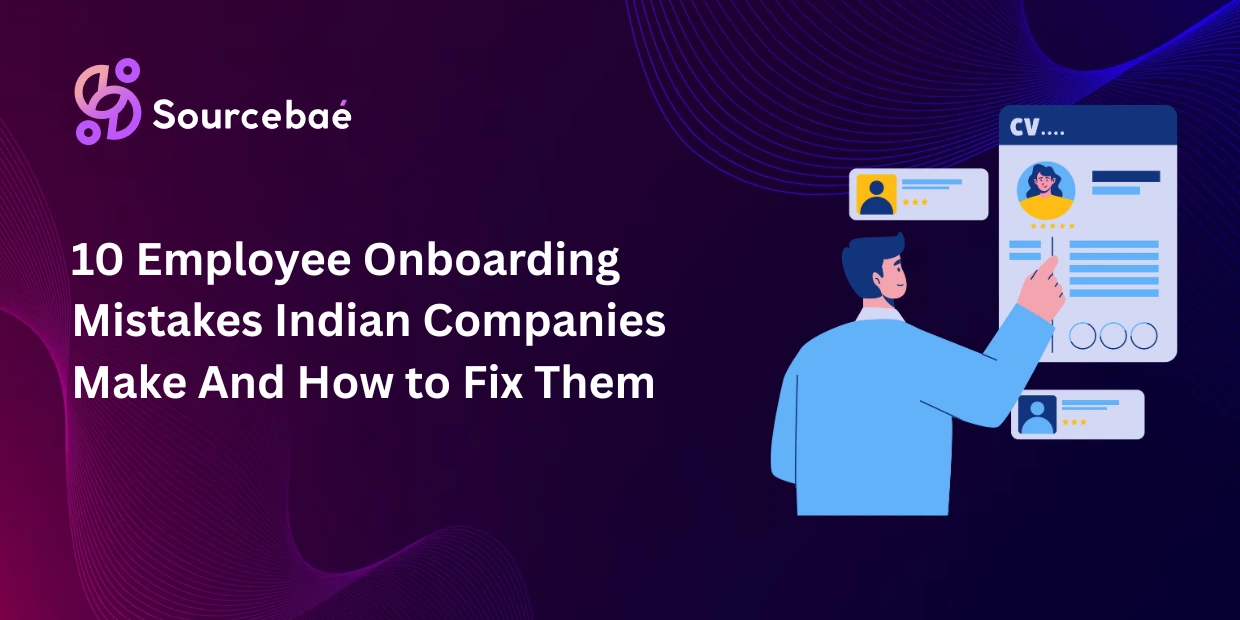Human resources departments encompass various critical functions that drive the success and sustainability of any organization. Among these functions, recruitment and selection are central to human resource management (HRM). Both operate distinctly but complementarily for optimal staff acquisition. Understanding the clear distinction between recruitment and selection processes is imperative, as these terms, while interrelated, often get misused interchangeably.
Without comprehensively understanding recruitment vs. selection, organizations risk confusion, inefficiencies, and poor hires—directly impacting productivity, employee morale, and even corporate reputation. This blog post will take a deep dive into the fundamental differences, steps involved, key benefits, common challenges, practical tips, and frequently asked questions regarding recruitment and selection methodology.
What is Recruitment? – Detailed Explanation
Definition of Recruitment
Recruitment refers to the HR process of searching, attracting, and encouraging qualified candidates to apply for job vacancies within an organization. This process aims to build a positive employer brand and attract a substantial pool of potential candidates who possess the necessary skills and qualifications.
Importance and Objectives of Recruitment
An effective recruitment strategy plays a crucial role in shaping an organization’s talent pool and sets the stage for selection and future growth. Key objectives of recruitment include:
- Ensuring a large and diverse applicant pool.
- Strengthening employer brand visibility.
- Enhancing organizational performance through skilled hires.
- Decreasing turnover by attracting suitable candidates who align with organizational values.
Characteristics of an Effective Recruitment Strategy
A well-designed recruitment strategy should:
- Clearly define organizational needs and job requirements.
- Target the appropriate talent pools.
- Employ precise and relevant messaging in job postings.
- Maximize the organization’s reach using diverse recruitment channels.
- Maintain a positive candidate experience throughout the process.
Sources of Recruitment: Internal vs External
Internal Sources
Internal recruitment involves filling job vacancies from within:
- Promotions
- Transfers
- Internal job postings and employee referrals
External Sources
External recruitment involves sourcing candidates from outside the company, using methods such as job advertisements on career portals, recruiting agencies, campus placements, and professional networking sites such as LinkedIn and Indeed.
Recruitment Process – Key Steps
An efficient recruitment process typically follows these crucial steps:
- Identifying Vacancy and Job Analysis: Clearly defining the need for a new hire based on business requirements.
- Drafting Job Descriptions and Specifications: Outlining responsibilities, necessary qualification criteria, and skills for applicants.
- Attracting Candidates: Leveraging various job portals, advertisements, company websites, campus events, and recruitment consultants.
- Managing Application Inflow: Using Applicant Tracking Systems (ATS) to streamline application management.
- Shortlisting Eligible Candidates: Filtering candidates based on essential eligibility criteria relevant to the job description.
- Preparing Candidates for the Selection Phase: Informing shortlisted candidates regarding next stages and timelines clearly and transparently.
What is Selection? – Detailed Explanation
Definition and Scope of Selection
Selection is the strategic HR function of evaluating and screening candidates attracted through recruitment, deciding who best fits the organizational requirements in terms of skills, qualifications, experience, and cultural alignment.
Importance and Objectives of Selection
An effective selection process aims to:
- Ensure the right candidate is chosen from the applicant pool.
- Improve organizational productivity and reduce turnover.
- Adhere to legal and ethical employment standards.
- Foster positive work culture and employee satisfaction through better matching.
Difference in Approach and Method Compared to Recruitment
Recruitment is proactive, promotional, and encourages more individuals to apply. Selection, on the other hand, is reactive and evaluative, narrowing down candidate choices to meet specific organizational standards or criteria accurately.
Factors Influencing the Selection Decision
Several factors influence the hiring decisions, including candidates’ skill assessments, cultural fit, job-specific experience, expectations, and potential for future growth.
Selection Process – Key Steps
Typical steps in the selection procedure include:
- Screening Applications and Resumes: Filtering eligible candidates against job criteria.
- Selection Tests: Administering aptitude tests, personality tests, and skill assessments relevant to the position.
- Conducting Interviews: Employing structured or unstructured interviews, panel interviews, and competency-based interviews to assess candidate suitability.
- Background Checks and References: Verifying past employment, education, skills, and professional conduct.
- Medical Examinations (if applicable): Ensuring candidates meet necessary health requirements for certain roles.
- Decision-making and Job Offers: Finalizing selected candidates and formalizing employment offers.
- Employee Induction and Onboarding: Orienting new employees to the organization’s policies, processes, and culture.
Comparative Analysis of Recruitment and Selection
To succinctly summarize recruitment and selection differences clearly, consider the following points:
- Objective Differences: Recruitment aims at attracting candidates and developing a candidate pool, whereas selection is concerned with accurately choosing the most qualified candidates from this recruited pool.
- Process and Approach Differences: Recruitment is inclusive, aiming to draw wide interest, and selection is selective, involving evaluation, testing, and elimination processes.
- Responsibility Differences: HR managers typically handle recruitment tasks. Selection is performed collaboratively involving HR and line managers or technical/department heads with specialized knowledge.
- Chronological Differences: Recruitment precedes selection. You first build your pool, then carry out selection.
- Outcome Differences: Recruitment fills a pipeline of potential candidates; selection finalizes hires.
Importance of Distinguishing Between Recruitment and Selection
Misconceptions about recruitment and selection processes can lead HR teams toward wasted resources, duplicated efforts, candidate frustration, and ineffective hiring. Additionally, clarity allows better planning, improved measurement of HR effectiveness, and an enhanced employer brand.
Notably, organizational productivity and employee morale suffer without clear recruitment and selection delineations.
Challenges in Recruitment and Selection
Organizations often encounter challenges in talent acquisition processes.
Recruitment Challenges
- Difficulty sourcing candidates due to labor market shortages.
- Insufficient employer branding or communication methods.
- Navigating competition, limited budgets, and specialized skill needs.
Selection Challenges
- Selection biases and subjectivity.
- Ineffective candidate assessments and interviews.
- Time-consuming processes leading to candidate disengagement.
Tips for Improving Recruitment and Selection Efforts
Organizations aiming at optimal results can implement these best practices:
- Clearly articulate recruitment objectives and position roles specifically.
- Invest in advanced Applicant Tracking Systems (ATS) technology.
- Leverage talent analytics for improved decision-making.
- Embrace structured and objective selection interviews.
- Regular training for HR personnel to reduce bias in selection processes.
Conclusion
Clearly distinguishing between recruitment and selection plays a fundamental role in the success of organizational growth and efficiency. Recognizing their distinct processes, responsibilities, and objectives empowers organizations to achieve superior hires and foster competitive employment strategies. HR professionals who precisely differentiate recruitment and selection will enjoy improved employee performance, higher retention rates, and a robust employer brand reputation.
Frequently Asked Questions (FAQs)
What is recruitment?
Recruitment is the human resource process of attracting and encouraging a pool of qualified candidates to apply for open positions within an organization, usually by leveraging internal or external channels.
What is selection?
Selection is the subsequent HR process that involves screening, evaluating, testing, and identifying the most qualified candidate from the recruitment applicant pool.
What is the major difference between recruitment and selection?
Recruitment aims to build a large candidate pool for job openings, while selection carefully assesses and chooses the best-qualified applicants from that pool.
Which process occurs first—recruitment or selection?
Recruitment always occurs first. It creates a candidate pool from which subsequent selection processes identify and finalize successful hires.
Why is it crucial to distinguish recruitment from selection?
Clearly distinguishing recruitment and selection ensures structured hiring workflows, avoids duplication and confusion, enhances quality hiring decisions, and contributes significantly to organizational success.
What common challenges do organizations face during recruitment and selection?
Common challenges include sourcing qualified talent effectively, managing skill mismatches, overcoming selection bias, labor market competition, and inefficient or overly lengthy hiring processes.
How can companies improve their recruitment and selection processes?
Companies can leverage digital technology, draft clear job descriptions, enhance employer branding, implement structured evaluations and interviews, and invest in modern ATS solutions for higher efficiency and success in recruitment and selection.






